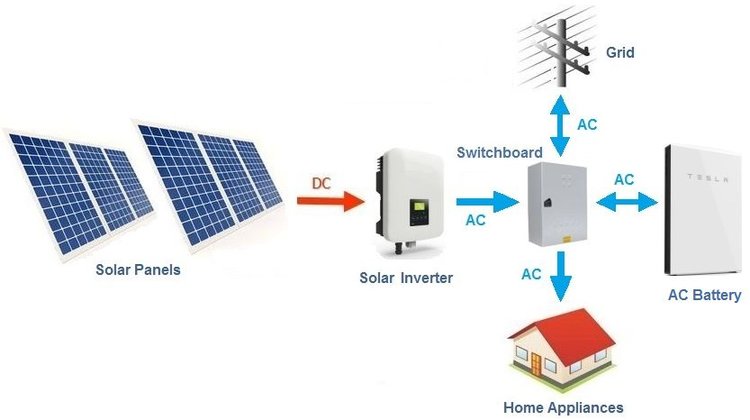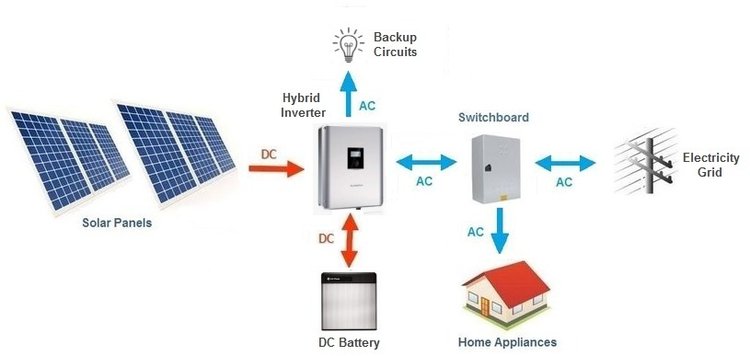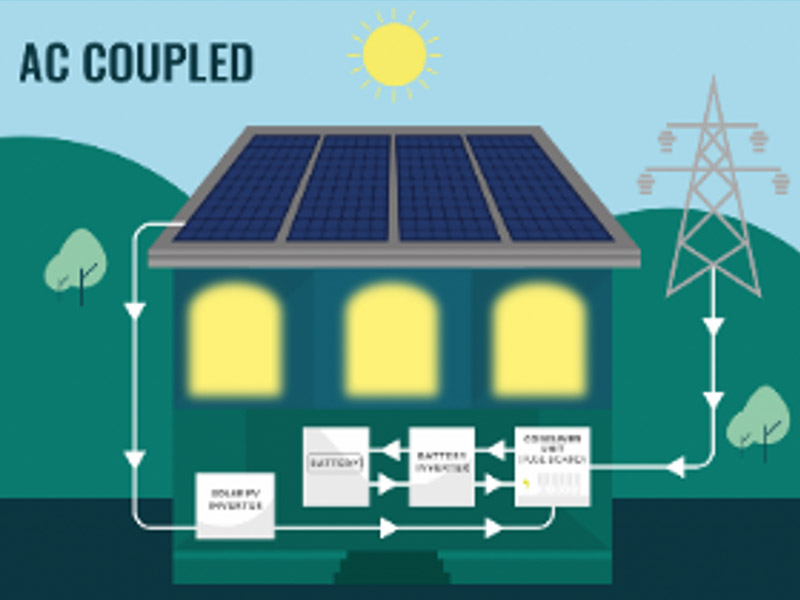Connection Options
AC Versus DC Coupling
When you buy a solar battery, consideration needs to be made about the choices between ‘AC coupling’ or ‘DC coupling’. Usually this will be determined by whether your battery is fitted at the same time as your solar panels or ‘retrofitted’. Powervault 3 is an example of an AC-coupled system, while Tesla’s Powerwall 2.0 is an example of a DC-coupled system.



AC Coupled
Requires separate inverters for your battery and panels. An AC (alternating current) battery is not connected directly to your solar panels but is connected via the electricity meter. This means it is easier to retrofit to existing panels, so if you have solar panels already in place this may be the best solution for you. You will need an additional inverter to convert DC electricity to AC for use in your home and then back to DC to be stored in the battery.
PROS
-
- More juice: you get the combined power from battery and panel inverters
- Flexible location. As batteries are best at room temperature and inverters are best at cooler temperatures, it is easier to optimise both because they do not need to be near each other
- Battery faults will not affect your panels & vice versa
CONS
-
- 1-3% less efficient power transfer than DC
- Can be more expensive as requires more than one inverter

DC Coupled
Battery and panels share the same inverter. DC (direct current) batteries tend to be installed at the same time as solar panels as they connect directly to the panels. An additional inverter is not needed as it is connected before the electricity meter. DC systems can’t be charged from the grid, according to the Energy Saving Trust.
PROS
-
- More efficient power transfer than AC by up to 3%
- Often cheaper to install as you only need one inverter
CONS
-
- Limited access to power.
- Battery must be installed near inverter. Batteries prefer temperatures around 20°C while inverters need to be in the cool, so there may be a trade off in efficiency
